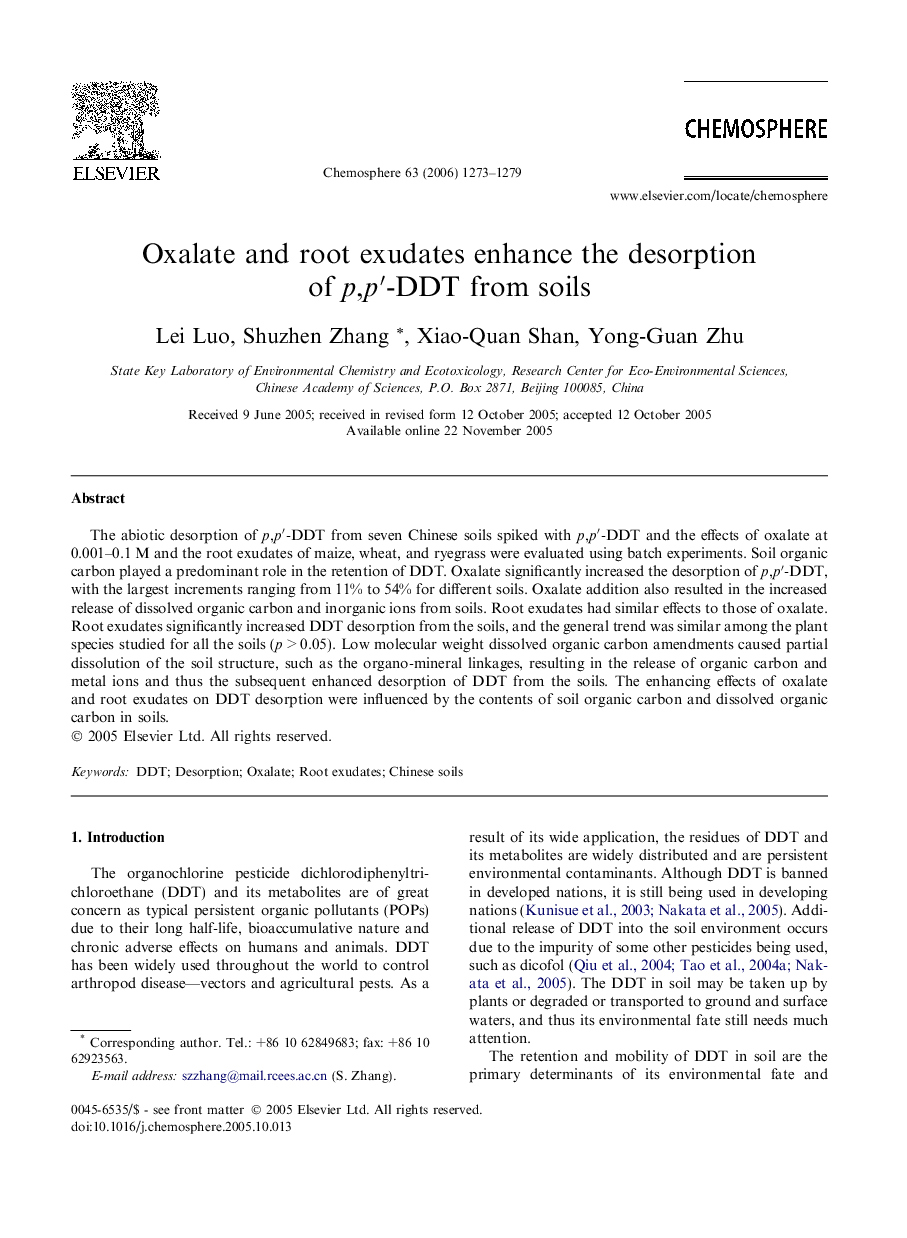| Article ID | Journal | Published Year | Pages | File Type |
|---|---|---|---|---|
| 4416920 | Chemosphere | 2006 | 7 Pages |
Abstract
The abiotic desorption of p,pâ²-DDT from seven Chinese soils spiked with p,pâ²-DDT and the effects of oxalate at 0.001-0.1 M and the root exudates of maize, wheat, and ryegrass were evaluated using batch experiments. Soil organic carbon played a predominant role in the retention of DDT. Oxalate significantly increased the desorption of p,pâ²-DDT, with the largest increments ranging from 11% to 54% for different soils. Oxalate addition also resulted in the increased release of dissolved organic carbon and inorganic ions from soils. Root exudates had similar effects to those of oxalate. Root exudates significantly increased DDT desorption from the soils, and the general trend was similar among the plant species studied for all the soils (p > 0.05). Low molecular weight dissolved organic carbon amendments caused partial dissolution of the soil structure, such as the organo-mineral linkages, resulting in the release of organic carbon and metal ions and thus the subsequent enhanced desorption of DDT from the soils. The enhancing effects of oxalate and root exudates on DDT desorption were influenced by the contents of soil organic carbon and dissolved organic carbon in soils.
Keywords
Related Topics
Life Sciences
Environmental Science
Environmental Chemistry
Authors
Lei Luo, Shuzhen Zhang, Xiao-Quan Shan, Yong-Guan Zhu,
